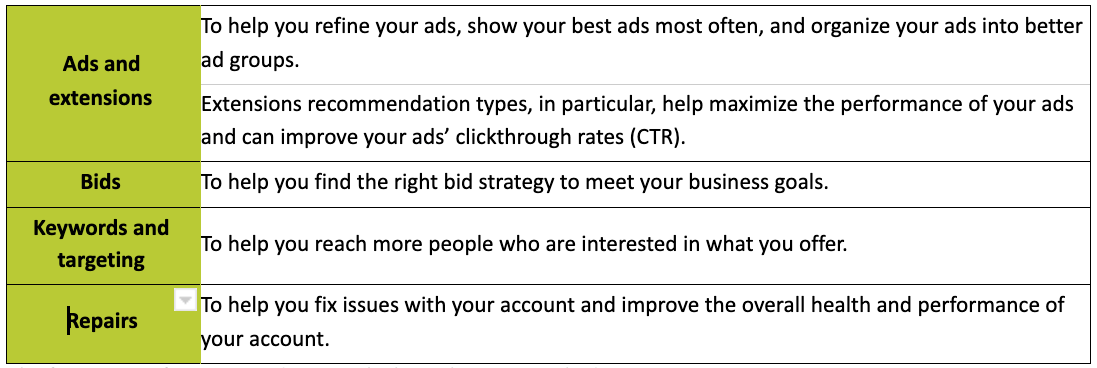Understanding the Google Ads optimisation score
The importance of quality scores and Ad Rank across Google Ads campaigns has been well documented over the years due to their direct influence on CPCs. However, as machine learning begins to more accurately predict campaign performance, will the importance of optimisation scores also increase?
Google defines the optimisation score as an estimate of how well your Google Ads account is set up to perform, alongside this you are provided with a list of automated recommendations. Your optimisation score is calculated in real time and is based on a set of factors such as statistics and settings but crucially also eligible/recently applied recommendations. Advertisers will always question the accuracy of these suggestions but as Google announced that 33 of these could be automatically applied, questions began to add up.

The four areas of recommendations which can be auto-applied.
Diligent marketers would have recognised that accounts were able to opt out of this program, however a short conversation with any Google Ads rep will highlight the importance of this score. The largest risk for accounts, which typically goes under the radar, is that changes that are automatically applied do not appear in the change history within the Google Ads interface, rather you would need to sign in to the ‘Auto Apply Recommendations Control Center’ to gain visibility on the changes being made. This subtle change to reduce visibility is one of the reasons advertisers are questioning the true intention of the recommendations page. While Google suggests that the page is there to help accounts get the most out of their budgets by improving your bidding, keywords and ads, the reality is that their objective appears to be increasing your account’s spend levels.
While optimisation scores are a good measure of the health of the account, the score and the suggestions are not able to take into consideration your campaigns overall digital strategy, as such they should be taken with a pinch of salt.



